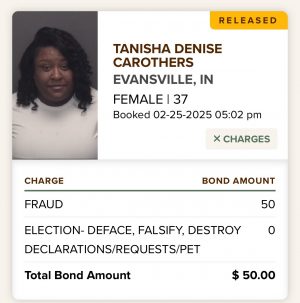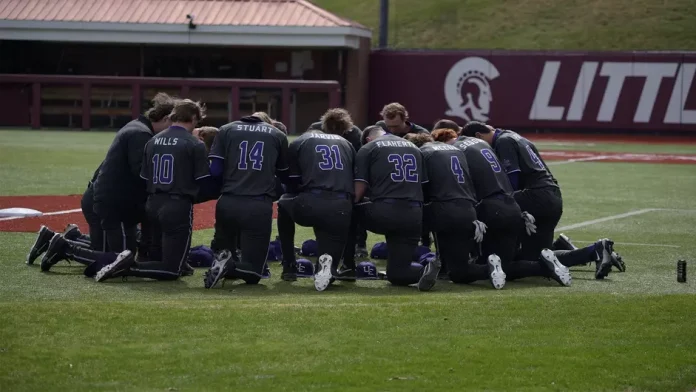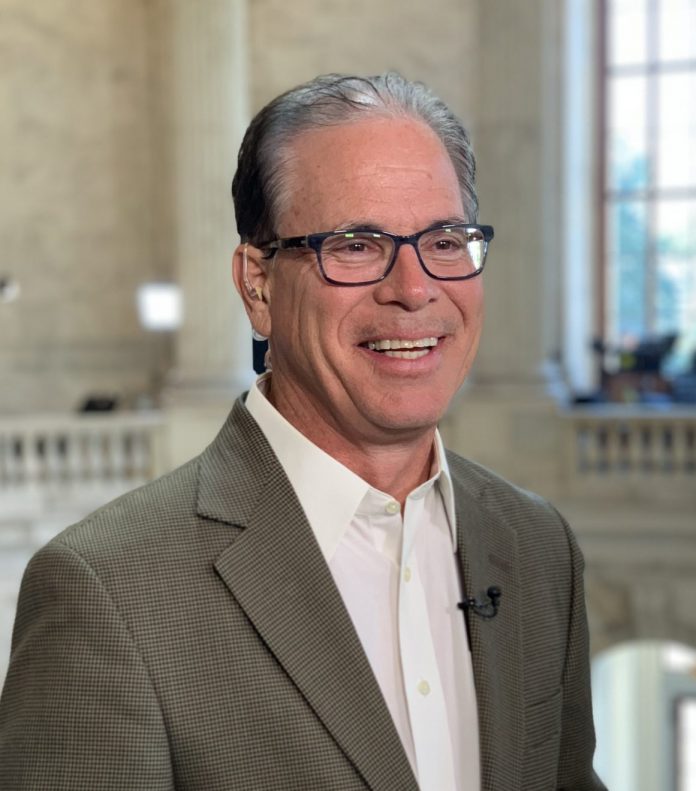Aces baseball struggles with red-hot Kentucky offense
Strong starts give Trailblazers doubleheader sweep at Jerry Blemker Field
VINCENNES, Ind. – The Vincennes University Baseball team returned to Jerry Blemker Field Tuesday morning looking to bounce back from their home opener Monday afternoon with doubleheader action against Morton College and a rematch against NJCAA Division III No. 15 Joliet Junior College.
The Blazers were able to open up fast starts in both games and ride the early momentum to a 5-2 victory over Morton College and an 8-4 victory over Joliet to complete the doubleheader sweep.
Vincennes opened the day Tuesday morning with a showdown against Morton College.
VU opened the scoring on the day in the second inning after a lead off walk by freshman Jarret Phillips (Jeffersonville, Ind.), who advanced on a stolen base and came around to score on a groundout put in play by sophomore Noble Johnson (Terre Haute, Ind.).
Vincennes continued to add in the second after a single by freshman Carter Gricius (Scottsburg, Ind.) was followed by a big two-run home run by sophomore Bryce Gross (Bridgeport, Ill.), his second of the season, to put the Blazers on top early 3-0.
Morton would get a run back and final crack the scoreboard in the fourth, before VU answered back in the fifth on back-to-back singles by freshman Jevan Andrews (Hobart, Ind.) and an RBI single by sophomore Nate Montgomery (Lexington, Ind.).
The two teams would trade runs in the sixth, where Vincennes took advantage of a leadoff single by Noble Johnson, who was driven in on a bases loaded walk by Nate Montgomery, giving him two RBIs on the day and his third time reaching base in four plate appearances.
The Trailblazers pitching would hold in the seventh after Morton looked ready to strike with the bases loaded with only one out but were unable to push the runs across and extend the game as Vincennes closed out the 5-2 victory over the Panthers.
Sophomore JD Bowser (Mt. Carmel, Ill.) got the start on the mound for the Trailblazers, throwing five strong innings, allowing one unearned run on four hits and striking out eight while picking up his first winning decision of the season.
Freshman Ty Stultz (Terre Haute, Ind.) was the first out of the pen for the Trailblazers, throwing one and one-third innings, allowing one run on two hits and striking out two.
Sophomore Bryce Gross stepped in in the seventh and closed out the game for the Blazers striking out two in two-thirds of an inning to pick up the save.
“It was a great job by JD Bowser stepping up,” VU Head Baseball Coach Chris Barney said. “It was a good bounce back win for us after a tough night last night. We actually swung the bats okay in the first game and did a pretty good job defensively.”
“Bowser pitched well,” Barney added. “Ty Stultz got us a couple of key outs and then we turned around and had Bryce Gross close it out. Multiple guys stepped up with multiple RBIs, so game one was pretty good.”
VU looked to keep this momentum going in the evening portion of Tuesday’s doubleheader, getting a chance at revenge against NJCAA Division III No. 15-ranked Joliet Junior College.
Vincennes again struck early, getting on the scoreboard in the second inning after sophomore Damon Kay (Spencer, Ind.) began the inning with a hit by pitch.
Freshman Jarret Phillips followed that with a walk and the two advanced around the bases by taking advantage of a passed ball and a wild pitch, plating Kay to give the Blazers an early 1-0 lead.
Noble Johnson was able to get on base later in the inning with another walk, stealing second and then coming around to score on a two-RBI broken bat single by sophomore Brody Fessel (DePauw, Ind.) to put the Blazers on top 3-0 early.
Vincennes would get another run in the third inning, scoring after loading the bases by Nate Montgomery being hit by pitch and Damon Kay and Jarret Phillips drawing walks.
Montgomery would score on a groundout put in play by sophomore Yancey Edlin (Pekin, Ind.) to increase the Trailblazer lead to 4-0.
Joliet would respond in the fourth inning with a pair of runs and later cut the deficit to one with a run in the sixth to cut the VU lead down to 4-3.
Vincennes looked to answer back and pick up a few insurance runs in the bottom of the sixth and got the inning started right with a lead off single by Yancey Edlin.
Edlin’s walk was followed by a walk by Brody Fessel and the pair moved up 90 feet on a successful sacrifice bunt by freshman Jakob Hoyer (Georgetown, Ind.).
Edlin would then come in to score on a passed ball as Fessel moved to third and sophomore Bradyn Douglas (Frankton, Ind.) kept the inning going with a two-out walk.
Jevan Andrews legged out an infield RBI single and Douglas would come around to score on a passed ball.
VU closed out the inning with a double steal which allowed Andrews to score from third before Nate Montgomery was tagged out in a run down, giving the Blazers a commanding 8-3 lead going into the seventh.
Joliet would look for a big late comeback in the seventh inning and were able to plate one run in the inning but were unable to get more as Vincennes closed out game two of the day 8-4, completing the doubleheader sweep.
Freshman Eastin Whaley (Kokomo, Ind.) got the start on the mound for Vincennes in game two, throwing three scoreless innings, allowing one hit and striking out three to pick up the winning decision.
Freshman Wyatt Burris (Farmland, Ind.) entered in the fourth, allowing two runs on three hits in one and one-third innings while striking out two.
Sophomore Colton Okes (Evansville, Ind.) pitched the final two and two-thirds innings of relief, allowing two runs, one earned, on five hits and striking out four while picking up the save.
“IS IT TRUE ” FEBRUARY 26, 2025
We hope today’s “IS IT TRUE” will provoke honest and open dialogue concerning issues that we, as responsible citizens of this community, need to address rationally and responsibly.
City-County Observer Comment Policy: Be kind to people. No personal attacks or harassment will be tolerated and will be removed from our site.
We understand that sometimes people don’t always agree and discussions may become a little heated. The use of offensive language and/or insults against commenters will not be tolerated and will be removed from our site.
Any comments posted in this column do not represent the views or opinions of the City-County Observer or our advertiser.
IS IT TRUE that when money is taken from people’s paychecks that is called a TAX…when money is paid to a taxing authority for ownership of real estate, a car, a boat, or another object that is the subject of an assessment and a bill, that bill is called a TAX?…that every time money goes from an individual or organization to a taxing authority, that is a TAX?…the TAXING AUTHORITY is the place that levies a TAX and the person or company paying that money is a TAXPAYER?
IS IT TRUE that the taxing authority has the responsibility of using the TAXES that have been collected responsibly and they are accountable to the TAXPAYERS?…when a taxing authority collects a TAX for a specific purpose then the money is assumed to go for that purpose and any deviation from that purpose is subject to audit in almost every situation?
IS IT TRUE that taking money from Evansville taxpayers to send back to Evansville taxpayers for this purpose may send more TAX MONEY to Evansville than would have otherwise been sent?…these funds may even be successful in attracting some sports-related entertainment to Evansville?…the reality is however that a TAX is a TAX and there is no other way for the state to get money than to TAX someone and any money coming from the State of Indiana to Evansville for any purpose whatsoever is and will always be a TAX.
Any comments posted in this column do not represent the views or opinions of the City-County Observer or our advertiser.
BREAKING NEWS: City Council Member Arrested on Felony Fraud Charges
 Evansville City Council member Tanisha Carothers has been arrested on felony charges related to questions about her eligibility to serve in the 4th Ward. Police allege that Carothers did not live in the 4th Ward for six months before the Democratic Party caucus that selected her to replace Alex Burton on the council. In addition, police say that she did not live in the city for a year before the caucus. Residency requirements are set by state law. Carothers is also charged with falsifying state election forms.
Evansville City Council member Tanisha Carothers has been arrested on felony charges related to questions about her eligibility to serve in the 4th Ward. Police allege that Carothers did not live in the 4th Ward for six months before the Democratic Party caucus that selected her to replace Alex Burton on the council. In addition, police say that she did not live in the city for a year before the caucus. Residency requirements are set by state law. Carothers is also charged with falsifying state election forms.
One of the other candidates for the 4th Ward seat, Angela Bullock, raised the allegations shortly after the November 9 caucus. Bullock has since filed a civil suit asking that Carothers be removed from the council.
Alex Burton, who promoted Carothers as his replacement on the council, took to Facebook to show his continued support for her, “They are so fragile, upset, and beside themselves that they are trying to tarnish the great works Tanisha Denise is doing for our community, I was proud to support her as my successor. AND, she still has my FULL support! This is so embarrassing, but this is where we are in 2025.”
Carothers was booked into Vanderburgh County Jail and released on $50 bond.
This is a developing story.
“It’s Half-Time, and We’re Playing to Win” — Governor Braun Talks About the First Half of Legislative Session
This report provided by the governor’s press office.
INDIANAPOLIS – Today Governor Mike Braun highlighted his successes so far in the first half of the legislative session, with major pieces of his Freedom and Opportunity agenda on health care, education, public safety, and economic development well on their way to becoming law.
He also outlined his priorities for the second half of the legislative session and commended his partners in the General Assembly for their commitment to getting results for Hoosiers.
“It’s half-time in my first legislative session, and we’ve already put big points on the board for the Freedom and Opportunity agenda on kitchen table issues like lowering health care prices, putting parents in charge of their kids’ education, cracking down on drug dealers and repeat violent criminals, and making government more efficient,” said Governor Mike Braun.
“We’ve had a strong start, and we’re not letting up in the second half. I’m going to continue to work closely with my partners in the General Assembly to get results on our Freedom and Opportunity agenda and achieve historic tax relief for Hoosiers.”
Governor Braun highlighted several bills that are part of his Freedom and Opportunity agenda which have already passed either the House or Senate:
Health Care
• House Bill 1003, the biggest package of reforms, contains:
• Site neutral pricing reform
• Prior authorization reform
• Stricter enforcement for Medicaid fraud
• Data ownership and sharing reforms
• And many other reforms that will lower prices and improve outcomes for Hoosiers.
• House Bill 1004, which will make sure non-profit hospitals actually act like non-profits.
• House Bill 1666, which establishes an approval board for health care mergers and acquisitions and makes ownership information more transparent.
• Senate Bill 118, a bill that will bring transparency to the 340B program and reveal prescription markups.
• Senate Bill 140, which takes on prescription benefit managers (PBMs) that are driving up prescription drug prices for Hoosiers.
Education
• House Bill 1001, which will:
• Fully fund universal school choice
• Increase funding for school safety
• Expand Career Scholarship Accounts for kids with special needs and
• Increase funding for the Education Savings Accounts program
• Senate Bill 146, which increases minimum teacher salary by $5,000
• Bills ensuring age-appropriate curriculum for students, re-instating A through F grades, and a suite of solutions to improve our academic achievement in math have passed as well.
Public Safety
Senate Bill 324, landmark legislation for keeping Hoosiers safe:
• Increases penalties for drug dealers and repeat violent offenders, and
• Sets mandatory minimum bail for repeat violent offenders
House Bill 1006, which creates an opportunity for the state to address non-compliant prosecutors and increase funding for prosecutors across the state.
Economic Development
• HB 1001 includes Hoosier Workforce Upskill Tax Credit to give employers a financial incentive to upskill their employees.
• SB 346 includes the Rural Hoosier Business Growth Program to spread economic development throughout the state.
Charles Schefer to give USI Alumni in Residence Lecture
Charles Schefer to give USI Alumni in Residence Lecture
The University of Southern Indiana Philip H. Hagemann Performing Arts Department and the College of Liberal Arts are excited to welcome Charles Schefer, a 1996 graduate in communications, as the presenter of the annual Alumni in Residence lecture. His lecture is titled Actor, rapper, banker and will take place at 1 p.m. Monday, March 3 in Kleymeyer Hall, located in the lower level of the Liberal Arts Center. This event is open to the public at no charge.
From working with Oscar winners, to sharing the stage with Grammy winners, to sitting in boardrooms with CEO’s, Schefer has a lot of stories to tell. He will share his experiences from the University of Southern Indiana to Hollywood and back home again and explain how his four years at USI led to a lifetime of adventures by simply applying the lessons he learned in the classrooms at his alma mater.
The Alumni in Residence program is designed to bring successful USI alumni back to campus to share their experiences and provide guidance to current students. The program highlights the diverse career paths of USI graduates and proves the value of a USI education.
For more information, visit USI.edu/air.
USI Friday Night in the Forum film series returns this spring
USI Friday Night in the Forum film series returns this spring
The University of Southern Indiana College of Liberal Arts and English Department will host the Friday Night in the Forum film series on Fridays beginning March 21 and running through April 25. All films will be shown with English subtitles and will begin at 5 p.m. in WA1 (Forum I), which can be accessed from the first floor of the Forum Wing in the Wright Administration Building. The series is open to the public at no charge.
The venue features stadium seating, digital projection and digital surround sound. Immediately following each film, Eric Braysmith, Lecturer in English, will lead an informal discussion.
Five films have been selected for the spring series:
- March 21: Oppenheimer (in collaboration with the Marlene V. Shaw Biology Lecture Series)
- March 28: The Bikeriders (in collaboration with Tri-State VinMoto)
- April 4: Boogie Nights
- April 11: Who Wants to Kill Jessie?
- April 18: Head
- April 25: Hundreds of Beavers
For more information, visit the Friday Night in the Forum film series webpage.
Collective Action Network (CAN) Summit 2025: Local Residents Leading the Path to Change
Collective Action Network (CAN) Summit 2025: Local Residents Leading the Path to Change
ECHO STAFF
FEBRUARY 26, 2025
Evansville, IN – ECHO Housing and Community Development is proud to host the upcoming Collective Action Network (CAN) Summit on Wednesday, April 16, 2025, from 9:00 AM to 5:00 PM at Carter Hall, University of Southern Indiana. This dynamic, full-day event will bring together community partner organizations, leaders, stakeholders, and neighborhood residents to explore collaborative solutions for neighborhood challenges. Are you interested in voicing the most pressing issues in your neighborhood and learning about how those issues can be addressed? Join us for this one-day event
Keynote Speaker: Danielle Varda
The summit will feature Danielle Varda, Founder and CEO of Visible Network Labs, as the keynote speaker. Varda will present on “Thinking Like a Network Scientist”, offering insights into the power of community connections and data-driven collaboration.
What to Expect:
• Attendees will pinpoint their neighborhood’s most urgent concerns, shaping the summit’s focus and discussions.
• Public Release of the Ecosystem Mapping – A real-time visual of how community partners are connected and work across private, public, and non-profit sectors to address issues such as housing, government services, Veterans programs, education, healthcare, public safety,
workforce, arts & culture, and much more.
• Resident-Led Panel – Firsthand experiences and insights from neighborhood residents
• Engaging Work Sessions – Interactive discussions informed by the pressing needs of
neighborhood residents
Who Should Attend?
• Neighborhood Residents – Panel discussions will be based on issues neighborhood residents find most important
• Community Partner Organizations & Stakeholders – We encourage each organization to invite
a resident from the neighborhoods they serve.
• Anyone interested in making our neighborhoods betterRegistration & Cost:
• Neighborhood Residents – FREE
• Community Partner Organizations – $25 per person – each paid registration also covers the
cost of a neighborhood resident
• See more details and register at: echohousing.org/can-summit
Join us in fostering stronger community connections and impactful collaborations at the CAN Summit 2025!
####
ABOUT COLLECTIVE ACTION NETWORK: The Collective Action Network (CAN) is a cross-sector group of community leaders who come together to create positive change. Using the collective impact
model, this approach unites multiple organizations to tackle systemic challenges through sharedgoals, data-driven strategies, and coordinated efforts. Together, we strive to enhance community outcomes and build a stronger support system for those seeking to improve their qualitof life..
ABOUT ECHO HOUSING AND COMMUNITY DEVELOPMENT: ECHO Housing Corporation is a
designated non-profit 501(c)(3) Community Development Corporation (CDC) with a mission to improve lives by reducing barriers to housing, social wellbeing, and economic opportunity. Since its founding, ECHO Housing and Community Development has been the leading provider of homeless services, including permanent supportive housing, for individuals experiencing homelessness in the community, and a primary convenor of collaborative community development efforts. ECHO tacklesthe root causes of housing instability and homelessness by addressing critical community challenges.
ECHO’s community development efforts focus on three key areas: physical, social, and economic
develop











